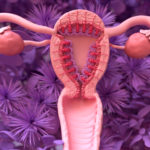About Fertility
What Makes a Good Endometrium?

The endometrium is the lining of the uterus that the body prepares monthly in anticipation of a pregnancy. Embryo implantation occurs when the endometrial receptivity is precisely well orchestrated. When the window of receptivity does not meet the optimal implantation timing of the embryo, pregnancy will not occur. What makes a good endometrium?
Endometrial Biopsy
Endometrial biopsies where a random representation of tissue is taken, has been one of the mainstays of assessment. Biopsy results were aimed at looking for pathology (such as inflammation and infection) as well as dating of the tissue to correlate it to what is happening at the level of the ovary.
The advent and use of transvaginal ultrasound have replaced much of what is assayed with biopsy regarding endometrial dating. Such ultrasound is used for monitoring ovarian stimulation during an ART cycle (IUI or IVF). As a part of these ultrasounds, basic elements of endometrial growth and development are followed.
This modicum plays a key role in timing for frozen embryo transfer cycles and donor egg programs, in particular. From the body of evidence accrued, we know estrogen and progesterone are the only two hormones necessary to provide for an adequate endometrium. The length of time of estrogen exposure does not seem to be as important (5-30 days) as the development and resultant thickness of the endometrium prior to progesterone exposure.
Endometrial Thickness and Embryo Implantation
Initially, the endometrium thickens as it is fueled by increasing estrogen hormone levels from the ovary. When ovulation occurs, it switches modes into a progesterone (Pro-gestational) dominant environment. This time is known as the luteal phase. Within this phase exists a critical 24-hour window that is often termed the “window of receptivity.” Frankly, it is the only time during the entire monthly cycle that the endometrium is competent to accept and support the embryo.
The endometrium is incredibly dynamic during this time. The thin mucus-like coating that protected the endometrium dissolves, exposing the rich uterine environment that is teaming with receptors that are thought to attract the embryo and to be involved in its attachment and eventual implantation.
As the window comes to a close, the endometrium no longer is receptive to an embryo that has not implanted; and it begins the process anew. If implantation occurs, it promotes embryo growth and placental development as it plays host to its new and evolving tenant.
Contact Us
Our physicians are experts in diagnosing fertility problems. If you have more questions about what makes a good endometrium or have concerns about trying to conceive, we are here to help.


